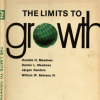A Net Energy Parable Revisited
A Net Energy Parable Revisited. (**Note: This was my first main post on TOD. It was an anecdotal attempt at showing how scaling of lower energy gain renewables might have deleterious wide boundary impacts on society. The core principles behind this story remain intact and relevant).
Besides water, energy is the most important substance for life on the planet. For most organisms energy is embodied in the food they eat, be it bugs, nuts or gazelles. The excess of energy consumed to energy expended (net energy) has been integral in the evolution of the structure and form of present day organisms.
Net energy is measured as how much energy is left over after the calories used to find, harvest, refine and utilize the original energy are accounted for. It is a term linked to physical principles and departs in many cases from our current market mechanism of valuing things by price. The alternative energy debate seems to have two firmly entrenched camps – those that acknowledge the importance of energy gain to our society and those who focus on gross energy, energy quality and dollars. This post explores what net energy is, why its important and how its principles may impact the future organization of our society.
[break] For most living things, energy is calories. Over eons, natural selection has optimized the most efficient methods for energy capture, transformation, and consumption.( Lotka) Cheetahs that repeatedly expend more energy chasing a gazelle than they receive from eating it will not incrementally survive to produce offspring.
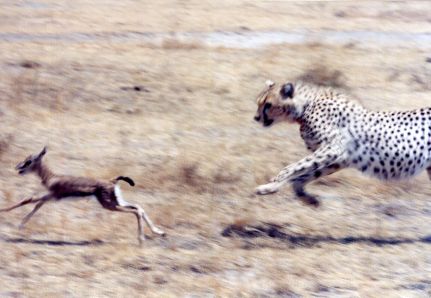
But humans, in a very brief evolutionary time span, have puzzled out how to unlock the hydrocarbon bonds in fossil
fuels, freeing up vastly more energy that can be directly eaten. The vast majority of our per capita energy production is spent on non-nutritive exosomatic consumption. We have gradually, with rapidity at times, advanced modern human civilization to a global scale, with liquid fuel in jets, trucks, and automobiles providing the glue that links people and products together.
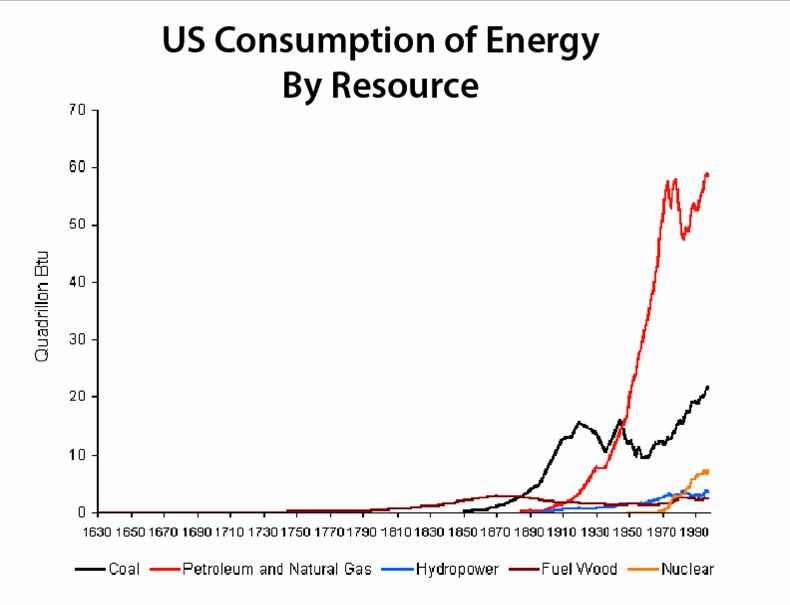
WHAT IS NET ENERGY?
To harness and consume energy requires some type of energy investment. This investment is what comprises the difference between gross energy and net energy. There is various nomenclature that describes this concept. Energy profit ratio, surplus energy, energy gain, EROI, and ERoEI all represent virtually the same relationship of how much energy we receive, relative to an energy input(dollars do not factor in). The most referenced metric in the Peak Oil literature is EROI or ERoEI (Energy Returned on Energy Invested), which, in its simplest sense is the ratio:
Energy Output / Energy Input
There is disagreement (sometimes dramatic) in the energy literature not only as to what should be included as energy inputs and outputs (a boundary issue) but how variables are included (how to evaluate co-products, how to include other limiting inputs to an energy technology, etc) These nuances will be covered in a subsequent post.
Net energy is typically given as per unit of energy invested. Thus:
EROI = Net Energy + 1.
(For those of you who’ve played craps – some tables pay off the hard-ways FOR one and others TO one. EROI and net energy have a similar relationship. EROI is how much energy output FOR an energy input and net energy is the energy output TO the energy input.)
Net energy also can refer to a sum as well as a ratio. For an ethanol process that has an EROI of 1.2:1 -the net energy is just .2, but we can also calculate how much net energy is created for society in a given year or a life-of-resource total. At EROI of 1.2, the 3.9 billion gallons that the US produced in 2005 required 3.29 billion gallons of BTU energy input, resulting in a `net energy’ of 610 million gallons. (This post will use net energy and EROI interchangeably – if a sentence uses EROI, just subtract one to get net energy, if I use net energy, just add one to get EROI)
A GROSS vs NET ENERGY GRAPH
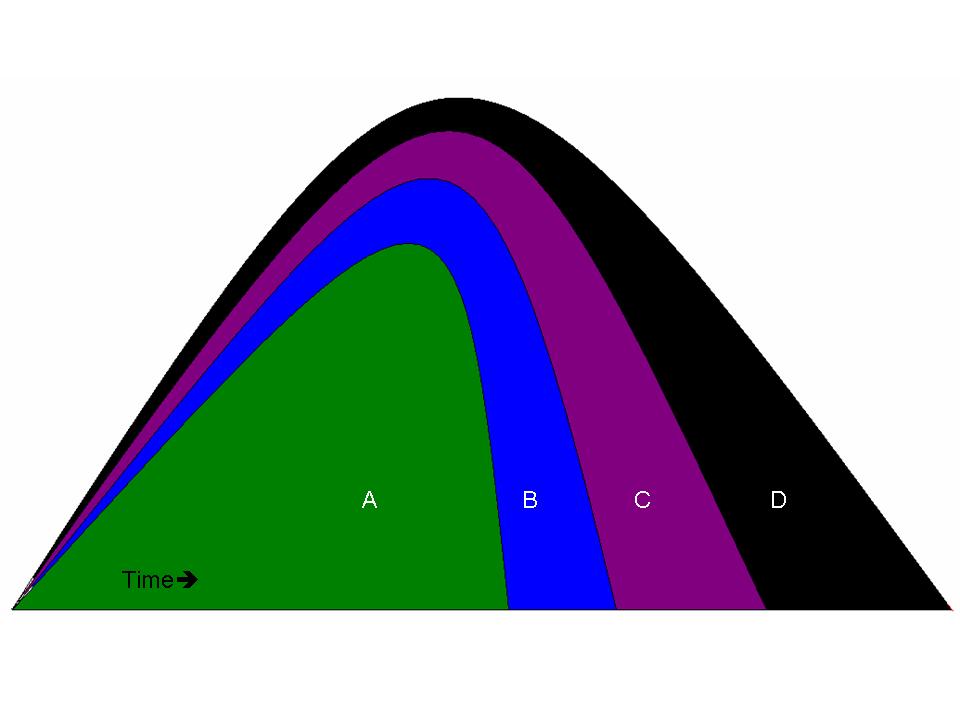
Briefly, the above graph shows a theoretical depletable resource which follows the ‘best first’ concept of resource extraction. The vertical axis is quantity and the horizontal is time. The gross energy resource “X”, is the entire area under the curve. (“X” = “A”+”B”+”C”+”D”). Direct energy costs are “D”. Indirect energy costs (like tractors and highways and medical insurance and such) are “C”. Environmental externalities (in energy terms) are “B”. “A” represents the total net energy of the resource after costs have been subtracted. At any given point in time the EROI can be calculated by taking a ratio of the total area divided by the costs (depending on the boundaries). As can be seen, net energy peaks and goes to zero way before the total gross energy is depleted. (This graphic is from an upcoming paper on EROI by a colleague (Kenneth Mulder) and myself.)
ENERGY QUALITY
Energy quality is also relevant. From an economic standpoint, the value of a heat equivalent of a fuel is set by its price, energy density, physical scarcity, cleanliness of the fuel, capacity to do useful work, flexibility, safety, conversion aspects, etc. (1)
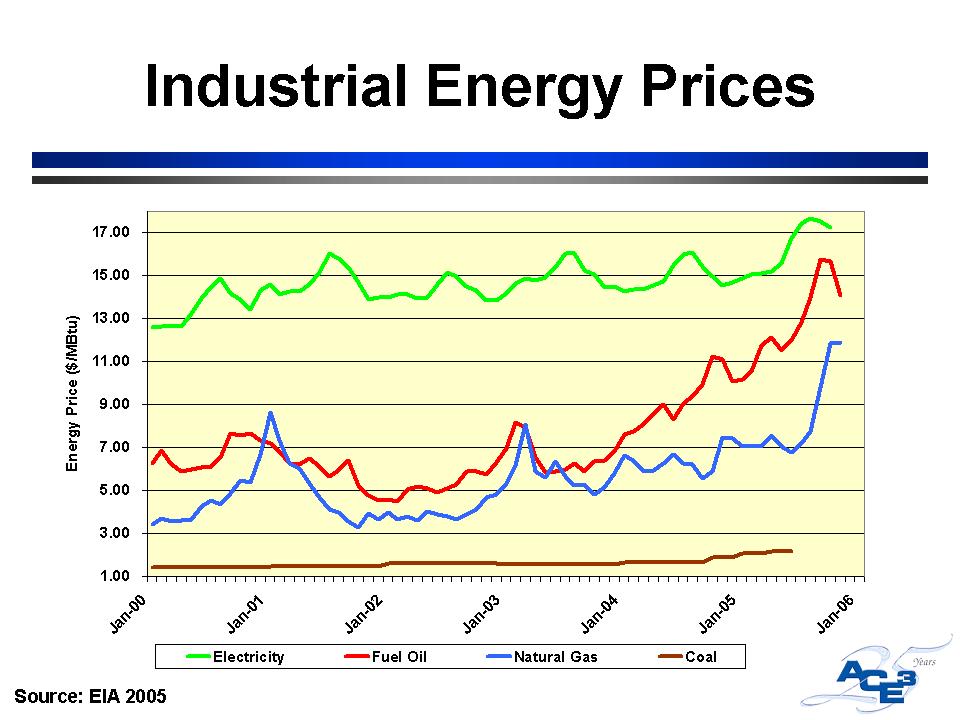
(Source – Neal Elliot – ACEEE)
Electricity is currently the highest quality energy we have in our society, largely due to its ability to do work. Although crude oil is of lower energy `quality’ than electricity, its use is ubiquitous in allowing other segments of society to transport goods, etc. and its `quality’ as measured by price, has been increasing relative to electricity in recent years.
Cutler Cleveland et al. devised one method of `quality correcting’ the net energy of oil and gas extraction using, The Divisia Index, which accounts for energy quality of both inputs and outputs(1 )Below is a graphic of the the thermal and quality corrected EROI of US oil and gas extraction.
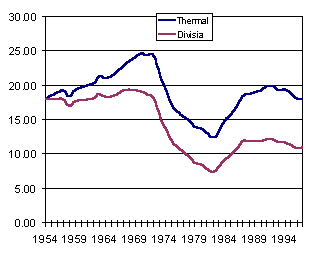
“The Divisia EROI is consistently much lower than the thermal equivalent EROI. The principal reason for this is the difference in the fuel mix, and hence fuel quality, between the numerator and denominator of the EROI. The outputs are the crude, unprocessed forms of oil and natural gas. The inputs are electricity and refined fuels such as gasoline and other distillate fuels. The latter are higher quality than the former, and have higher prices. Refined fuels and electricity are, therefore, weighted more heavily in the Divisia formulation.”(1)
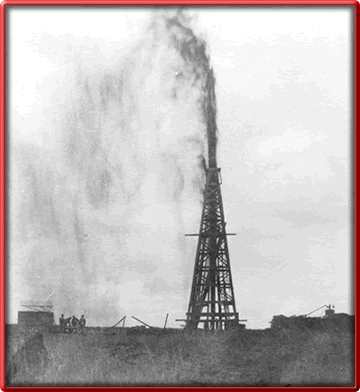
In the 1930s, US oil was easy to recover. In many cases it was almost at the surface and had an EROI of 100:1.(2). It has since declined, depending how one measures it or who one talks to, in the range of 10-15:1. As it gets deeper, harder to find, more viscous, higher sulfur content, etc, the EROI will continue to decline. A typical refining efficiency is about 10:1, so the total refined EROI of our precious liquid fuel is still between 5-10:1. This may not seem so high (compared to 100!), but how many stocks have you owned that make 500-1000%? On each iteration? This is the type of energy subsidy world society has become accustomed to.(My paucity of references for this segment gives evidence to how little concern our leadership has for the issue of net energy. Charles Hall, (with data from John S Herold and Co.) and others are working on new updated oil and gas EROI numbers – but solid energy data is either proprietary or difficult to assimilate)
WHY IS NET ENERGY IMPORTANT?
We all intuitively know the difference between net and gross – we use the concept everyday. If you make $100,000 per year in salary and the government takes 38%, your net is $62,000. If the government took 99%, it really wouldnt matter whether you made $100,000 or $1,000,000, your take home would be very small. The same concept applies to energy, and in particular, whatever energy source is most central to society. Basically, net energy matters because net energy is what we use.
“Energy gain, or EROI, varies with the quality (transformity) of a resource deposit and with the efficiency of the technology used to locate, extract, process, distribute and exploit the resource. As the ease of obtaining or using a resource declines, more energy must be devoted to these activities, causing energy gain to decline. Where an energy budget is substantially constant, allocating more resources to energy production reduces the amount of energy available for other activities. The potential impacts of such a situation on a human system include less leisure time, a lower standard of living, higher taxes, and an increase in childhood mortality. In an animal population, allocating greater effort to energy production may mean less winter fat, increased embryo resorption, lower birth weights, or the like.Tainter(3)
It is fundamentally impossible to maintain a constant level of net energy while the aggregate energy profit ratio drops. Only after the energy profit ratio and the need for new fuel related level off can net energy supplies return to the desired level (4).(This book, Beyond Oil, is 20 years old, but is probably the best book on the concepts of net energy, agriculture and society)
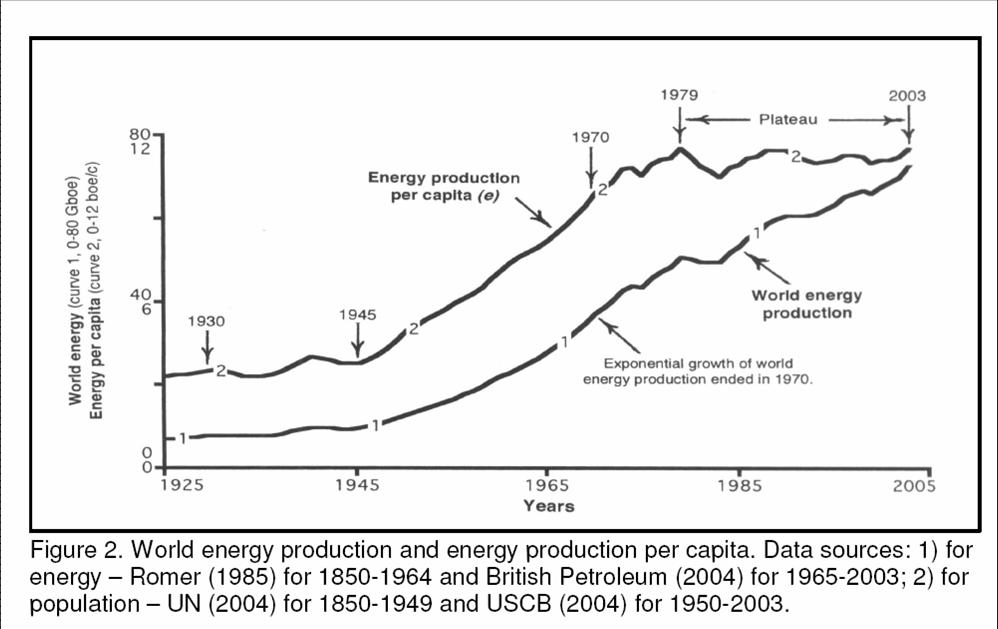
We are currently living in the highest energy gain era of any organism in the history of earth. Although the total amount of BTUs consumed in 2005 was higher than any year in history, world energy per capita peaked in 1979.(5)(One could argue that the plateau in net energy per capita has been maintained by a large wealth transfer from poor to rich, from future to present, and from abstract ‘energy’ (debt) to real consumption).
There are a finite amount of stored fossil fuels on the planet. Some of the largest, highest quality resources have already been exploited. The remaining resources are in many cases more energetically difficult to harvest, or have negative side effects (e.g climate change and coal).
“Environmental degradation is greater when the resource is of low quality and distributed but heavily used. Thus, a switch to renewable energy sources might bring, ironically, environmental damage comparable in scale to, or greater than, that caused by the use of fossil fuels.” (Joseph Tainter)(2)
We already see evidence of this in some of the scaling of biofuel production in Asia
A NET ENERGY PARABLE
Net energy of corn ethanol examples and debates have been presented ad nauseum from both proponents and detractors. The redundancy is trivializing the concept. Though the ethanol debate is critically important in deciding how to deploy of our remaining fossil energy, what follows is a more benign example:
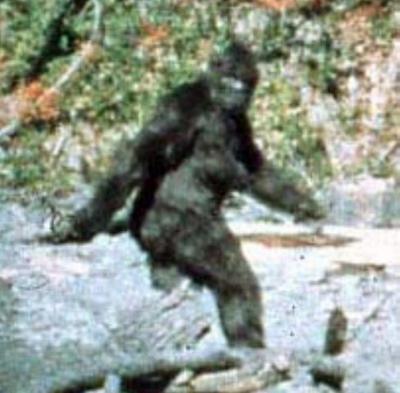
A civilization of 1000 sasquatches lives on a small distant Planet P. They require only food (energy) and water to live but also enjoy a vibrant culture with artisans, builders, and craftspeople. Sasquatches are vegetarians (as everyone knows) but do raise animals for labor help, namely Hephalumps. These animals help them harvest large hempy plants from the mountain near where they live and process them into Saspacks (the finest, sturdiest, durable backpacks in the universe). Each week (which is 10 days long, based on Planet P’s sun), the sasquatch colony works very hard for five days and then has leisure time during for the next 5 days. Once a year, a ship from Planet X lands and trades luxury food items (non-caloric but tasty), medicine, comic books, and basic materials in exchange for an agreed upon cargo of Saspacks.
This societies only source of energy(calories) is Waybread, which is a highly energy dense cake made with Spice, water, and the meat from the Mongo nut, which grows in an enormous grove 25 miles from the sasquatch community. Once a Ten-Day, a troupe of the strongest 300 sasquatches traverses 25 miles to the Mongo nut groves, fills up their packs with nuts, and returns home with their energy bounty. It is a one day grueling journey across the Black Plains and through the Black Swamp but they make a ritual of it, telling stories and laughing most of the way until they arrive late at night. They spend a second day climbing trees and picking Mongo nuts, laughing at the colorful monkeys that play in the Mongo trees as well as picking some flowers to bring home to their wives and girlfriends. On the third day they leave at the crack of dawn and are home by nightfall. These same 300 sasquatches then spend two more days, cracking, pounding and combining ingredients together with the nuts to make Waybread; enough for the entire community for the next Ten-Day. All these sasquatches do no other work or leisure on the days they are procuring energy for the tribe. In return, they receive exalted status as the tribes energy providers, and a five day rest.
Since Sasquatches are freakin’ huge, each member of their society consumes 4 m-cals a day. They really only require 3 m-cals to survive, but the extra makes them fat and hearty and also contributes to general gastronomic pleasure (sasquatches do not like to feel peckish). Hephalumps are even bigger and the 100 strong herd each requires 8 mcals per day of Waybread to survive and function. Although Waybread is highly nutritious, it is also highly perishable, and must be consumed within one Ten-Day, after which time it gets wormy, and gross.
During the five-day ritual of energy harvesting and preparation, 600 other tribal members are busy harvesting fiber from the mountain, and weaving and stitching it into Saspacks. The remaining 100 bigfoots, mostly youngsters, clean and maintain the village, manage the water supply from the river, and comb the hillsides for Spice. At the end of the fifth day, a feeling of joy emerges in the community as the tribe can look forward to relaxing, dancing and sleeping for five straight days, with plenty of Waybread for everyone. This routine has been going on for as long as any sasquatch can remember. None of them could imagine anything otherwise.
We can determine the energy gain (or net energy) of this society based on the above information. First let’s look at the energy output:
Each of the 1000 sasquatches eats 4 mcals per day and there are 10 days per week on their planet. This equates to 40,000 mcals energy consumption per Ten-Day. Each of their herd of 100 Hephalumps requires 8 mcals per day (8,000 mcals per Ten-Day) Therefore the Mongo nut energy source provides them with a flow of energy of 48,000 mcals per Ten-Day. This is their energy output, which is entirely consumed.
How much energy does this society spend in order to get the 48,000 mcals? Well, 300 sasquatches work/travel for three days to acquire the Mongo nuts and then spend two days refining it into edible quality. They have to eat for nourishment during this time otherwise they would not have the strength to do work. Their caloric input (from the prior week’s waybread) is 300 sasquatches times 5 days times 4mcals equals 6000mcals.
The energy gain for this society is 48,000 mcals less 6,000 mcals equals 42,000 mcals per ten-day.
The EROI is 48,000mcals/6,000mcals =8:1. The net energy is EROI-1 or 7:1. (Remember, EROI is FOR one and net energy is TO one.) For every unit of energy spent in energy harvesting/refining, 8 are produced. Since they used one unit to produce 8, 7 are left over for other areas of society. (Of the 48,000 mcals of energy available to their society, 6,000 is used for energy production, 12,000 is used to make Saspacks, 2,000 used for cleaning and water procurement, 8,000 to feed the Hephalumps and 20,000 to sustain the tribe during their 5 days of hedonistic leisure.) Sidenote -even though there is a 8:1 EROI, 30% of the tribes members contribute to energy procurement.
One day, the 300 energy procurers arrive at the Mongo grove and find many of the colorful monkeys lying dead on the ground. They were so disturbed that they carried 2 of the carcasses home to show the shaman. They also discovered that the Mongo nuts were no longer as easily reachable from the ground and they had to go either deeper into the forest, or climb higher up the trees to fill their packs with the largest ones. This ended up taking a whole extra day.
After returning home a day late, the community was in a panic. They would have to spend a day out of their Five-Day to finish the procurement of food! And the sight of the dead, dark colored monkeys made many sasquatches cry. It was decided to call an emergency Council, to determine what might be done about the turn of events. Many wise and respected sasquatches voiced their opinions. They were saddened by the dead monkeys, but they were more concerned about the lack of easy to find Mongo nuts – the implications being the 300 energy workers might have to work MORE than 5 days per Ten-Day. One of the senior males suggested “We could save a little time by not stopping to pick and bring home flowers which aren’t really needed for our energy supply”. A matriarchal sasquatch immediately stood up and chastised “Zeke-Stinky-foot, you come home without flowers and you’ll see how much they are needed, Husband-mine!”. There was a vote and it was decided to continue to pick and bring home flowers.
During much arguing and debating, the shaman entered the pavilion and everyone quieted down. He exclaimed “Colorful Monkey-friends die from Black poisoning” A sharp intake of breath from the Council-members. “Our energy providers feet put Black Desert and Black Swamp on Mongo trees while they pick nuts. Colorful-monkey friends get on paws then in mouth then die.” The Council went into an uproar – Black poisoning! Because of our energy procuring! How awful! Yet what can we do? – We need the Mongo nuts to survive and have energy to work and sing! And if we go around the Black Desert and Black Swamp it will take an extra day in both directions!!” The sasquatches were very upset, and spent most of their Five-Day arguing and trying to make a new plan, where none had ever been needed before. It was decided by the Council to have the 300 workers spend an extra day at the groves to fill up their packs. The Shamans comment about the Black Desert being carried to the trees, and killing monkeys was only talked about by a few, and drowned out by the sasquatch leaders who really wanted at least 4 days of leisure and 4mcals per day. It was also decided to send 100 of the 600 saspack workers on exploratory missions, something that hadn’t been done in generations, to see what was beyond a 25 mile radius of their community.
These plans worked out reasonably well and gradually the sasquatch colony adjusted. After all, they still had the same amount of food and energy, even though they had to work slightly harder for it, and produce a few less Saspacks. At the end of each Ten-Day the sasquatches were not quite as well rested, but were happy in their resolve to work a little harder to get energy for the tribe. (The Hephalumps did not notice any of this, and continued to chew their 8,000 mcal of Waybread per week.)
The phenomenon of `best-first’ apparently applies to Mongo nuts as well as oil. We can now calculate an updated net energy for the sasquatch society. The energy production was the same, at 48,000 mcal per Ten-Day. But the 300 sasquatch energy team now worked 6 days per week requiring 4mcal per day or 7,200 mcal. Also, 100 workers spent 2 days per week (on average) exploring and looking for other Mongo nut sites. From a societal perspective, this `energy exploration’ expenditure of 100*4*2=800 mcals should be included (somewhere) in any net energy calculations even though it didn’t directly result (yet) in energy production.
The updated EROI formula is:
Energy output = 48,000 mcal/Energy input =8,000 mcal = EROI of 6:1 (net energy of 5:1)
Now of the 48,000 mcal of production, 8,000 is used for energy procuring, 11,200 is used for industry (Saspacks), 2000 for village maintenance, 8,000 for Hephalump food and 18,800 for leisure.
Everyone in the sasquatch civilization still consumed the same amount of energy as before, but societies mix of labor allocation and free time had shifted.
***Sidebar of interest: We also now have information to calculate a more advanced (thorough) form of EROI, one that includes co-products and externalities. Flowers have value to sasquatch society and as such get a `co-product’ credit in the EROI calculation. (much like dry distiller grains in the ethanol calculation) Since they are an additional output, we can reduce the amount of energy allocated to getting the Mongo nuts, as some of the sasquatch caloric expenditure is now considered necessary for getting flowers. How we allocate this is a debated but relevant question. We could take the market price of the two products (sasquatch society has none) or allocate by mass( the flowers have 50% of the mass of the Mongo nuts) or by volume (they are very light – only 10% the weight of nuts).
Allocating by mass would increase the EROI quite a bit:
Energy output = 48,000 mcal Energy input =4,000 mcal (4,000 allocated to flowers) = EROI of 12:1 (Net energy of 11:1)
Allocating by weight would increase the EROI slightly:
Energy output = 48,000 mcal /Energy input = 7,200 mcal (800 allocated to flowers) =EROI of 6.66:1 (Net energy of 5.66:1)
Our market system (in my opinion) underestimates the long term value of energy to society and net energy calculations that give so much `energy credit’ to things like Dry Distiller Grains, thus overestimate the true energy gain (or underestimate the energy loss).
Regarding externalities, it is difficult to put an energy cost on dead monkeys. However, the poisoning was clearly a direct result of the sasquatches energy harvesting techniques and to exclude it from an energy analysis would not be holistic. Modern EROI analysis is just starting to value externalities as costs (see Patzek and Pimental regarding soil mining and Life Cycle analysis of GHG emissions) Ecological economics attempts to value things that humans need and value but are considered `free’ in the market system. Quite possibly, the limiting factor of large scale ethanol production, even cellulosic, is the degradation of soil and assumption of continued ease and availability of irrigation.
Since sasquatches are a peaceful and conscientious race, lets arbitrarily allocate a high energy cost to the biodiversity loss to their culture of 8,000 mcals. The EROI would then be:
Energy output = 40,000 mcal (8,000 were subtracted) / 8,000 mcal energy input
=EROI of 5:1 (net energy of 4:1)
Continuing with our story:
The sasquatches situation, largely beyond their control, deteriorated further. The Mongo nut supply, while still enormous, was becoming more thinly distributed. Also, the nuts, which once averaged 3 lbs were now mostly 1-2 lbs. It took the sasquatches much more time and effort to pick and organize them. It also took more time to process them into Waybread, as the shell to nut ratio had increased substantially. All in all, it took an additional 100 sasquatches (400 total) a total of 7 days to harvest and process the Waybread. They were not beginning to get restive.
One day, while the stressed sasquatch community was hard at work on what was normally their 7th day (2nd of leisure), a troupe of youngsters came running full out into the village “We are saved! We are saved! – We found a new Mongo nut grove with huge nuts and plenty of them!! We’ll soon be able to go back to our old routine of dancing and reading comic books! For a Five-Day! These nuts are huge!”
A Council was hastily convened where the youths were eagerly bombarded with questions: “How big was the grove? Were there colorful monkeys? Would you like some water? Have you met my daughter Fern-Blossom?” An old silver-back sasquatch, one of the tribal leaders, stood up and quietly asked “Sons, how far is this grove?” One of the scouts replied “Sir, its 120 miles on the other side of the mountain, but an easy walk, with no Black Swamp or Desert”. The leader nodded: “That is 5 days in each direction. If we send our energy workers that far, there will not be enough time for them to process the Waybread upon their return.” He paused, “However, our Mongo nuts close to the village are getting smaller. I think we should go harvest this new, bigger energy source you have discovered. We will have to take more of our Saspack workers and our village cleaners too. But you are right, you have saved us.”
When everything was sorted out, the sasquatches had to organize 2 energy procurement teams of 375 sasquatches each. One team brought water from the village and met the other team halfway and then returned with the large Mongo nuts to process them. These teams traded off in their duties but worked 8 days total out of every Ten-Day. This left 200 sasquatches to work on the saspacks, and it was decided, to be fair and because they were behind contract, that they also work an eight-day. There were only 50 of the tribe left to work on cleaning, and basic village maintenance. The community was amazed that so much! of their time was spent making Waybread, just to spend it on making more Waybread – very little singing and relaxation time anymore. After a few months, the tribal leader, at a somber Council meeting, announced that everyone would have to cut back, and strict rationing of daily consumption to 3 mcals per sasquatch would be enforced.
Because of the reduction in Saspack labor time, the Hephalumps weren’t all needed and some started to roam the village. A large controversy erupted when one of the energy workers, strained from a long ten-day on the road, hit a hephalump on the head and killed it. He wanted to eat it but didn’t know how.
The energy gain of this society continued to decrease. The energy output of 48,000 mcal (before the rationing), had an energy input of 750 sasquatches times 4 mcal times 8 days = 24,000 mcals.
The EROI was 48,000 / 24,000 =2:1 (Net energy of 1).
A large portion (50%) of this societies efforts were now allocated to energy procurement. Of the total 48,000 mcals procured, 24,000 was from energy procurement, 8,000 was for their livestock, only (200*8*4mcal) =4,800 mcal devoted to Saspack production, and 1,200 to maintain the village and procure water and 10,000 mcals for leisure and art.
A further problem, (for which I dont plan to attempt the math) was that WATER, not energy was now a limiting factor in the energy harvesting process. Water was much heavier to carry than Waybread so a cache had to be set up midway between the water source and the Mongo nut source. The Energy Return on Energy Invested stood steady at 2:1, but the Energy Return on WATER Invested, was declining dramatically.
After the tribal decision to ration consumption, the energy gain of society upticked. Since each sasquatch only consumed 3 mcals, (and many noticed new clarity of thinking and vitality after initial grumbling), the energy production requirements tapered off a bit:
The tribe still procured the same amount of Waybread (the extra was allocated to the following weeks Mongo picking team). The energy input was now only 750 *3mcal *8days = 18,000 Mcals. Because of their belt tightening (or efficiency) the societal EROI increased to 48,000/18,000 = 2.66 (net energy 1.66).Note: the EROI of energy procuring didnt change, but the societal energy gain, from a Tainter-like perspective, did increase.
At year end, the spaceship landed from Planet X. (There were 14 female sasquatches, and one male, waiting at the landing port, hoping to be rescued.) The alien trader strode down the ships conveyor and frowned when he saw the somewhat disheveled sasquatch community. There were Hephalumps everywhere (a delicacy on his planet), huts and sidewalks were in disrepair, and the tribe looked thin.
He was greeted by the tribal leader who sheepishly stated “Noble trader, our energy supplies have dwindled and we had to spend extra time harvesting a new energy source so only had time to make 3,200 Saspacks, not the 6,000 per our agreement.”
The alien snorted, “Silly sasquatches – your world, though small, is FULL of energy – what you call the Black Swamp is also known as crude oil and what you call Black Desert is called coal-both of these substances have way way more energy than your precious Mongo nuts. Since you are good customers, I will give you your materials and


